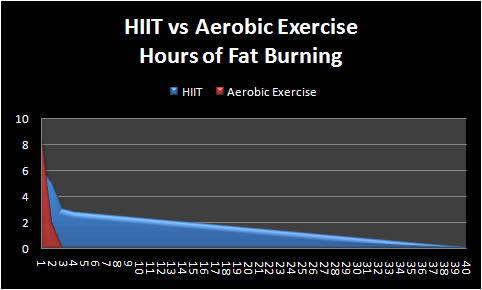Oxygen Debt

Ever wonder why your pulse and breathing rates don’t go back to normal immediately if you’ve been doing cardio exercise? You might say, “Well, it’s because you can’t just go from breathing fast to breathing normally in a flash.”
Okay, but why not? And what dictates how long it will take for everything will go back to normal after a hard workout?

If all of us were to start running around our blocks, some people after 3 blocks would be slowing down. Some people would go for 12 blocks. For some people it might be 3 miles. What accounts for the difference? In part it is due to lactic acid. Why does it build up sooner in some people than in others? The condition of your heart is the determining factor. The job of your heart is to pump oxygenated blood and deliver it to your skeletal muscles. Most of us have plenty of lung capacity. Unless you suffer from a respiratory disease, we all have plenty of lung capacity to inhale and exhale enough air. But our heart is a muscle and some people have more powerful hearts than others. If the condition of your heart is bad, as in a weak heart, then there is a decreased ability in the delivery of oxygenated blood.
When you’re exercising and your skeletal muscles aren’t getting enough oxygen, the body must tap into its anaerobic metabolism. This is where the body goes into a mix of aerobic and anaerobic energy production. Fermentation is an anaerobic respiration reaction that occurs when there is not enough oxygen to convert glucose into ATP so the glucose is temporarily converted to lactic acid. The accumulation of lactic acid in muscles contributes to muscle fatigue and muscle cramping. If you keep pushing yourself, and building up your oxygen deficit, your performance will deteriorate. Conversely, if your heart is really strong and powerful, then it’s pumping lots of oxygenated blood, your muscles are getting plenty of oxygen and aerobic respiration is continuing in your cells and not forming as much lactic acid.
 Doctors mimic this through something known as a cardiac stress test to see what your heart can do. Doctors want to see how hard they could push you and make you run on a treadmill as hard as you can before you have to tell them to stop the treadmill. Once they stop the treadmill, you will continue to pant because your body needs to repay the oxygen debt that was created during exercise. The doctor will note how quickly your heart rate returns back to normal because it’s a direct indication of the power and strength of your heart.
Doctors mimic this through something known as a cardiac stress test to see what your heart can do. Doctors want to see how hard they could push you and make you run on a treadmill as hard as you can before you have to tell them to stop the treadmill. Once they stop the treadmill, you will continue to pant because your body needs to repay the oxygen debt that was created during exercise. The doctor will note how quickly your heart rate returns back to normal because it’s a direct indication of the power and strength of your heart.
The greater the accumulation of lactic acid, the more additional oxygen will be required by your body to breathe in so that all the lactic acid can be converted to useful energy through aerobic respiration. This is known as oxygen debt following exercise. That is the reason why you are still panting after after you’ve already stopped. The stronger your heart is, the shorter that recovery time will be.
So how do you improve your endurance?
How do you exercise your heart? Does lifting weights do it? Not really. You have to speed up the heart. Any exercise that speeds up your heart rate is known as a cardio work out or aerobic exercise. Running, swimming, bicycling, aerobic dancing are all aerobic or cardio work outs and none of them involve lifting weights.
A quick note about High Intensity Interval Training (HIIT) can be said here. HIIT involves doing something like… Well.. let’s say you were running. You start with a 5 minute warm up, then run extremely fast, up to 90-95% of your ability for 1 minute, then walk for 30 seconds and then run again at that high intensity for 1 minute, and walk for 30 seconds. Repeat these intervals 5-12 times and then do a cool down walk for 5 minutes and you’re done. If you do the math, you would have done an intense cardio workout for less than 15-20 minutes, which is GREAT for anybody who feels they are short on time. It also kicks up your metabolism for the rest of the day, more-so than a consistent exercise because it builds up so much oxygen debt in such a short amount of time that it ramps up your cellular metabolism for several hours, long after you’ve stopped working out.







